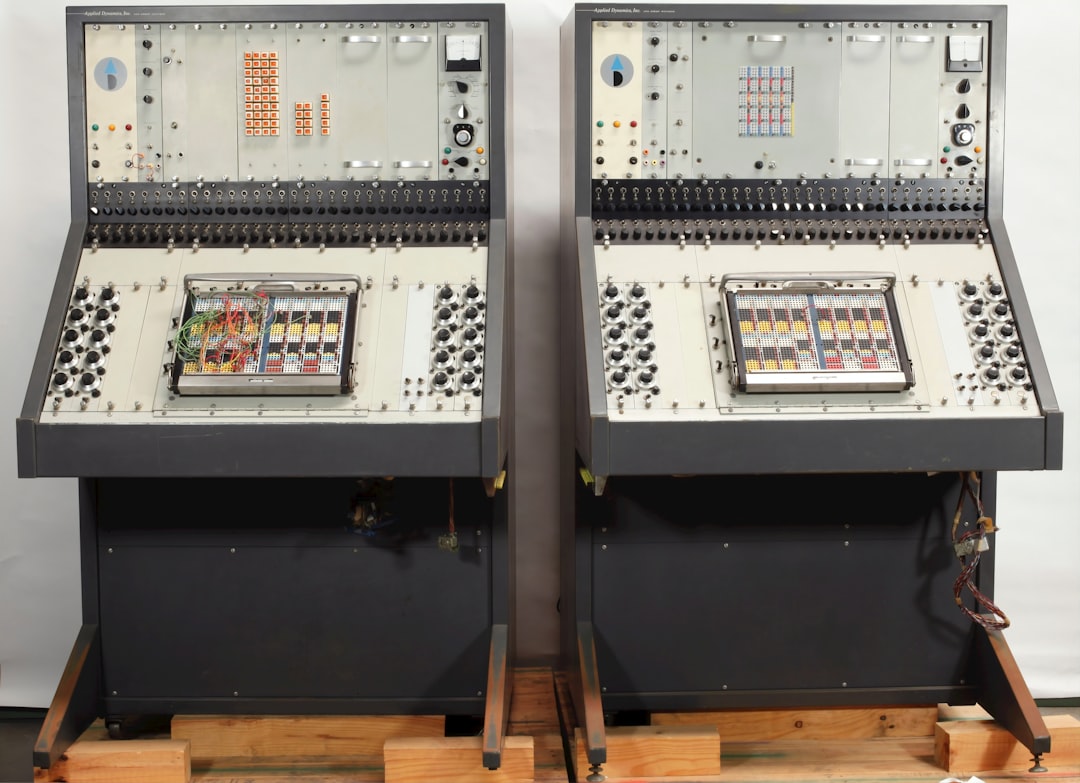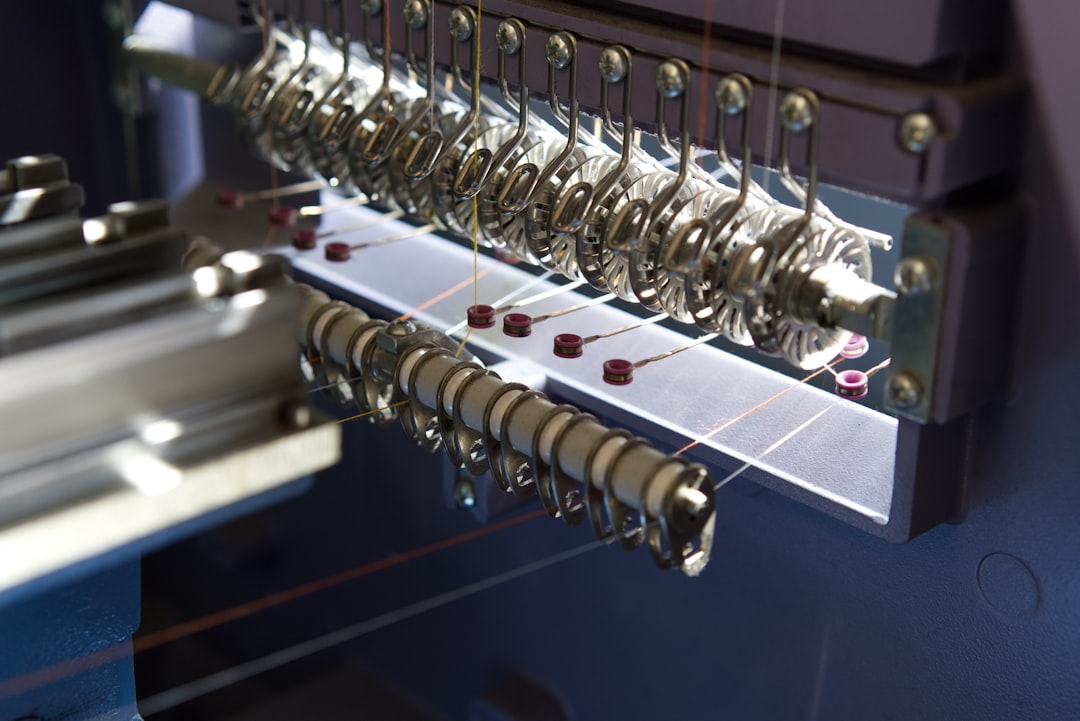

Engage prospects with a scan and streamline customer engagement with FREE QR code marketing tools by Sona – no strings attached!
Create a Free QR CodeFree consultation

No commitment

Engage prospects with a scan and streamline customer engagement with FREE QR code marketing tools by Sona – no strings attached!
Create a Free QR CodeFree consultation

No commitment
In today’s digitally driven world, QR codes in marketing have matured from novelty to strategic powerhouse, serving as a seamless bridge between offline engagement and online action. For duplicating machine suppliers, QR codes offer a frictionless and highly effective method to simplify access to product information, demos, and post-sale support—no cumbersome setup or app required. Many suppliers face missed opportunities: valuable prospects browse catalogs or inspect demo machines but never reach a landing page or submit an inquiry, leaving these critical interactions untracked and unqualified.
As suppliers and manufacturers of duplicating machines face growing competition and evolving customer expectations, instant access to technical specifications, product comparisons, reviews, and maintenance resources is now mission-critical. Pain points often occur when promising prospects engage with print materials but remain anonymous, stalling pipeline growth and complicating marketing measurement. QR codes offer a pathway for duplicating machine suppliers to modernize traditional materials like printed brochures, installation guides, and service request forms, converting them into interactive, data-rich entry points for prospective buyers.
With the right QR code solutions, suppliers can expand reach, improve engagement metrics, and drive measurable revenue growth while overcoming missed segmentation or poor visibility into buyer behavior. Approaching QR integration across marketing, sales, and support channels reduces friction, reveals buying intent, and ensures qualified leads are captured for timely follow-up. Combined with centralized tracking and CRM integrations, these strategies deliver a connected experience from the first scan to a closed deal.

QR codes act as a vital connection between physical touchpoints and digital outcomes, allowing duplicating machine suppliers to accelerate inquiries, purchases, and ongoing support. Suppliers commonly struggle with prospects who interact with print catalogs, equipment, or event displays but fail to act further because typing a URL or filling a form feels burdensome. This results in lost visibility into high-value prospects, whose interests are never captured in the CRM.
By replacing analog processes with QR-first workflows, scattered offline interactions become measurable, high-intent signals. A single scan can launch a tailored landing page, prefill a form, or open a live chat—directly impacting conversion speed, buyer experience, and post-sale satisfaction, since customers receive precisely the information they need when they need it.
QR code platforms empower duplicating machine suppliers to replace outdated analog processes and transform static brochures and paper sign-up sheets into interactive, insight-rich experiences. With tools such as Sona QR, suppliers gain automated CRM syncing and real-time conversion tracking. This leads to faster feedback loops and smarter budget allocation.
For duplicating machine suppliers, closing the offline-to-online gap is essential yet frequently challenging. Print materials, product displays, and packaging engage buyers in showrooms or trade shows, but often leave them anonymous, making timely follow-up and understanding buyer intent difficult. Incomplete lead tracking persists: many high-potential buyers read physical information but churn before completing online forms, leading to lost opportunities and inefficient marketing spend. For approaches to measurement frameworks, see Sona’s blog on offline attribution.
QR codes eliminate this friction by offering instant access to tailored content—spec sheets, how-to videos, live demos, driver downloads, or reviews—straight from any physical asset. This responsiveness addresses frustrations with slow follow-up and declining engagement. When a prospect can confirm media handling or compare duty cycles via a quick showroom scan, momentum is preserved and intent is accurately captured.
Speed and simplicity are vital in B2B sales for duplicating equipment. Instead of forcing prospects to type URLs or download apps, QR codes lead directly to the most relevant resources, reducing the risk associated with incomplete or outdated account data. Dynamic QR codes allow destinations to be updated after printing, while tracking dashboards reveal valuable engagement signals. These tools help suppliers tell casual browsers from high-intent decision makers, so resources can be allocated to real opportunities.

Duplicating machine suppliers can utilize a variety of QR code types to address practical challenges such as untracked prospect actions, missed segmentation cues, and manual contact data collection. The most effective formats support common buying and ownership journeys, from research to service and reordering. For manufacturing workflows, see QR codes in manufacturing.
Static codes serve well for permanent resources like safety instructions or general FAQs. Dynamic codes excel when tracking, testing, or the ability to refresh the destination are needed after printing. Pair each code with a clear call to action, customized for its specific setting.
Dynamic QR codes allow suppliers to evolve campaigns as needs change, updating destinations for new accessory launches or limited-time offers. Centralized QR platforms like Sona QR let you monitor usage and conversions across all touchpoints while maintaining personalization and freshness.

Growth for duplicating machine suppliers is often constrained by a lack of insight into where prospects encounter friction or exit the buyer’s journey. QR codes should be placed wherever prospects interact with your brand, turning these physical moments into active lead generation assets. When codes are easy to spot and clearly beneficial, scan rates increase and data becomes dependable. For inspiration in retail, see in-store QR ideas.
Consider the entire customer lifecycle: pre-sale research, in-showroom exploration, delivery and installation, and recurring maintenance. Every stage offers natural opportunities for QR codes to educate, collect data, and move conversations forward.
These placements transition analog assets into actionable digital insights so high-value opportunities aren’t lost to manual tracking gaps. With consistent design standards and strong calls to action, QR codes become dependable demand capture points in every environment you reach buyers.

Throughout the duplicator market, suppliers are using QR codes to remove friction, improve data quality, and drive buyers forward. The scenarios below address typical points of contact between prospects, owners, operators, and service teams, while generating measurable engagement signals. For event access workflows, see QR ticketing.
While trade shows and showrooms are obvious touchpoints for QR deployment, do not overlook post-sale moments such as preventative maintenance or consumable reordering—these stages can deepen loyalty, identify expansion opportunities, and turn owners into advocates.
Further ideas include QR codes for financing prequalification, instant cost calculators, or interactive operator training modules—each transforming a passive asset into a data-rich tool supporting pipeline and revenue goals.
A key pain point for duplicating machine suppliers is that much of their website traffic and offline engagement remains anonymous, complicating retargeting and pipeline growth. QR codes turn every scan into an opportunity to qualify, segment, and target valuable accounts precisely. With unique codes for each placement, a single campaign can generate dozens of segmented, intent-aligned micro-audiences. For paid activation, see Sona’s Playbook on intent-driven retargeting.
Connect each physical touchpoint to a clear intent signal: scanning a cost-per-page calculator suggests budget consideration, while a maintenance label scan points to an active customer seeking support. By mapping these signals to your CRM stages, you drive more relevant nurture flows and higher conversion.
Audience segmentation can distinguish procurement buyers from operator influencers, new customers from loyal renewals, or multi-site enterprises from local shops. Adapting outreach by segment ensures the right message arrives at exactly the right time.
Many duplicating machine suppliers struggle to bridge offline and online marketing, which often leads to fragmented data and underperforming initiatives. QR codes unify the marketing stack, enabling consistent data capture and engagement tracking across channels. When every code maps to a specific goal, campaign analysis and optimization become routine.
Adopt integration as a core habit and start with top-of-funnel placements such as industry journals and direct mail, then expand to in-showroom and post-sale assets. The effect is a cross-channel engine, with every scan fueling your CRM, retargeting, and conversion acceleration.
Managing all codes through a platform like Sona QR allows for optimization of spend, A/B testing of CTAs, and reduction in missed or misattributed leads, producing a measurable and scalable offline-to-online funnel.
A successful QR initiative starts with clarity and ends with measurable results. These steps help duplicating machine suppliers move from idea to execution efficiently, avoiding pitfalls like poor scannability or disconnected data.
Pair this checklist with a centralized QR management tool—Sona QR, for example, supports code creation, customization, analytics, and CRM integration.
Define your campaign goals and narrow your target scenario. For suppliers, this may involve generating demo requests at an event, streamlining financing in the showroom, or enabling maintenance sign-ups post-installation. Specific goals help tailor your call to action and clarify what success looks like.
Focus on areas where dropouts or anonymity kill full-funnel insight. Swap analog processes such as paper lead sheets for scans that prefill forms and auto-route data. If you can describe the expected user action within 10 seconds, you have chosen the right use case.
Choose static codes for perennial resources (like safety guides) and dynamic QR codes for tracking, A/B testing, retargeting, or easy updates. Dynamic codes are ideal for campaigns, pricing updates, or fast-evolving content.
Err on the side of dynamic. For most duplicating machine suppliers, editability and analytics are critical. Dynamic codes make governance easy since expired campaigns can be re-routed without reprinting.
Bring your brand to the code with a logo and colors, but use enough contrast for easy scanning. Add straightforward calls to action (“Scan for specs,” “Scan for financing”) near the code.
Test codes across devices, lighting, and surfaces—glossy, matte, corrugated, or fabric. Adjust size and spacing until every typical scan environment performs reliably.
Maximize exposure by placing codes at critical buyer touchpoints: product packaging, event displays, and direct mail. Align the destination and CTA to the use environment—a control panel code should open support or training, while a pricing placard code leads to financing.
Create unique codes for each placement to accurately track channel-specific scans. Even if the landing page is the same, different codes provide granular performance insight.
Monitor scans with analytics to identify which placements, content, and assets generate real engagement. Attribute leads by source, watch for landing page drop-offs, and use data to fine-tune CTAs and layouts.
A/B test design and destination impact. Shifting a CTA or code placement can boost scan rates. Sona QR, with real-time analytics and CRM syncing, lets you iterate while campaigns are live; for setup, review Sona’s blog on HubSpot integration.

The inability to connect offline scans directly to revenue drains marketing efficiency for duplicating machine suppliers. Modern QR analytics fix this by tying scan data to key actions like form fills, demo requests, financing applications, and closed deals. With scans linked to revenue, QR moves from novelty to a true performance channel.
Visibility enables waste reduction. If a catalog insert draws no scans, test new CTAs or move the code. If monitoring shows many scans on a showroom placard but low quote requests, adjust the landing experience. The aim is actionable measurement—for diagnosis, not just data.
Sona QR and Sona.com provide an analytics stack for turning real-world engagement into revenue insight. Sona’s AI-powered tools unify data, empowering suppliers to attribute impact and confidently scale what works.
Scaling QR code impact demands disciplined execution and data-centric iteration. As more assets carry codes, standardize everything from design to calls to action, while leveraging segmentation and automation for maximum effect. Over time, your QR program becomes a reliable pipeline and retention engine.
Training is also vital. Sales and service teams serve as human interfaces for explaining the value of scanning. When staff demonstrate scanning a demo unit or highlight a QR maintenance label, adoption grows quickly.
For example, placing QR codes on packaging and inside service doors gives instant access to maintenance guides and downloads. Scans can trigger welcome messages, prompt warranty registration, and enroll accounts in reminders for consumables—reducing support burden and improving post-sale engagement. For tamper protection and authenticity, see secure QR codes.
Effective QR use empowers duplicating machine suppliers to eliminate the barrier between offline and online engagement, turning static marketing assets into interactive, data-driven touchpoints. When executed thoughtfully—addressing missed opportunities due to anonymity or incomplete account data—every scan becomes actionable, leading to better segmentation, more personalized outreach, and clearer revenue attribution. This approach enables sustainable growth and lasting differentiation. With Sona QR, suppliers can create codes in minutes, centralize management, and tie scans to revenue, turning QR from a utility to a growth engine. Start creating QR codes for free.
QR codes have transformed the duplicating machine suppliers industry from static product listings into interactive, measurable engagement channels. Whether it’s streamlining access to product manuals, enabling instant service requests, or enhancing customer onboarding, QR codes replace cumbersome paper processes with seamless, mobile-friendly interactions that capture real-time data and boost operational efficiency. Imagine instantly connecting every machine user to tailored support materials and service options, improving satisfaction and loyalty.
With Sona QR, you can effortlessly create dynamic, trackable QR codes that update instantly without reprinting, linking every scan to actionable insights and improved customer experiences. This means better service turnaround, increased repeat business, and clearer visibility into how customers interact with your offerings. Start for free with Sona QR today and turn every scan into a gateway for stronger customer relationships and increased revenue.
QR codes provide instant access to product information, demos, support resources, and enable tracking of buyer engagement, helping suppliers convert offline interactions into qualified leads and improve marketing measurement.
Suppliers can place dynamic QR codes on print catalogs, demo units, packaging, and service labels to connect prospects to tailored content like videos, forms, and live chat, accelerating inquiries and post-sale support.
Dynamic QR codes are ideal for tracking, updating destinations, and retargeting, while static QR codes work well for permanent resources like safety instructions and FAQs.
QR codes capture scan data such as time, location, and content accessed, feeding this information into CRM systems to enrich leads, segment audiences by intent, and prioritize sales outreach.
Codes should be placed on trade show displays, product packaging, brochures, direct mail, showroom signage, and post-sale equipment labels to engage prospects and customers throughout the buying and ownership lifecycle.
By using dynamic QR codes, suppliers can update the linked content or landing pages anytime remotely, ensuring always-current information without needing to reprint physical materials.
Suppliers should define clear use cases, choose appropriate QR code types, design and test codes for scannability, deploy codes across key channels, and track and optimize performance using analytics.
QR codes placed on machinery can link to troubleshooting guides, service request forms, driver downloads, and maintenance schedules, reducing support calls and enhancing service speed.
Using QR codes reduces the need for reprinting brochures and manuals by enabling digital updates, which lowers paper waste and supports sustainable marketing practices.
QR codes unify offline and online marketing by linking physical assets to digital content, enabling consistent data capture and engagement tracking across brochures, direct mail, events, showrooms, and packaging.
Use Sona QR's trackable codes to improve customer acquisition and engagement today.
Create Your FREE Trackable QR Code in SecondsJoin results-focused teams combining Sona Platform automation with advanced Google Ads strategies to scale lead generation

Connect your existing CRM

Free Account Enrichment

No setup fees
No commitment required

Free consultation

Get a custom Google Ads roadmap for your business






Launch campaigns that generate qualified leads in 30 days or less.
